What are corvids?
Corvids are a group of birds all belonging to the Corvidae family, sometimes called the crow family, and include crows, jackdaws, rooks, ravens, jays, magpies, treepies, choughs, and nutcrackers. There are more than 120 species of corvid described.
How many species of corvid are there in the British Isles?
There are eight species of corvid in the British Isles: carrion crow, hooded crow, jackdaw, rook, raven, magpie, jay and chough.
The first five of these belong to the Corvus genus, which is the largest group in the Corvidae family. The magpie, jay and chough are in the Pica, Garrulus and Pyrrhocorax genera respectively.
What is the most widespread crow species in the world?
The raven (also known as the northern or common raven) thrives in a variety of climates, not just the classic colder climes of the north.
The birds can be found throughout the Holarctic, from the Arctic to the temperate habitats of North America and Europe, to the deserts of Africa. They can be seen in urban areas, such as downtown Los Angeles, and in the mountains, for example, up at 4,998m in the Himalayas.
This Q&A originally appeared in BBC Wildlife, and was answered by David Lindo.
Are corvids clever?
Corvids have a reputation for being intelligent birds, with various species having been shown to be able to use tools, recognise themselves in the mirror, being aware that they may be being watched, and remember human faces.
Read Dr Jo Wimpenny's piece exploring whether they deserve this reputation.
What is a murder of crows?
The origin of the term ‘murder’ meaning a flock of crows has much to do with the scavenging nature of this and other corvids.
Historically the presence of the gallows and slaughter on the battlefields would have provided rich pickings for our two species of crow. Such an association with death saw the development of folklore and superstition, causing the birds to be viewed less than favourably.
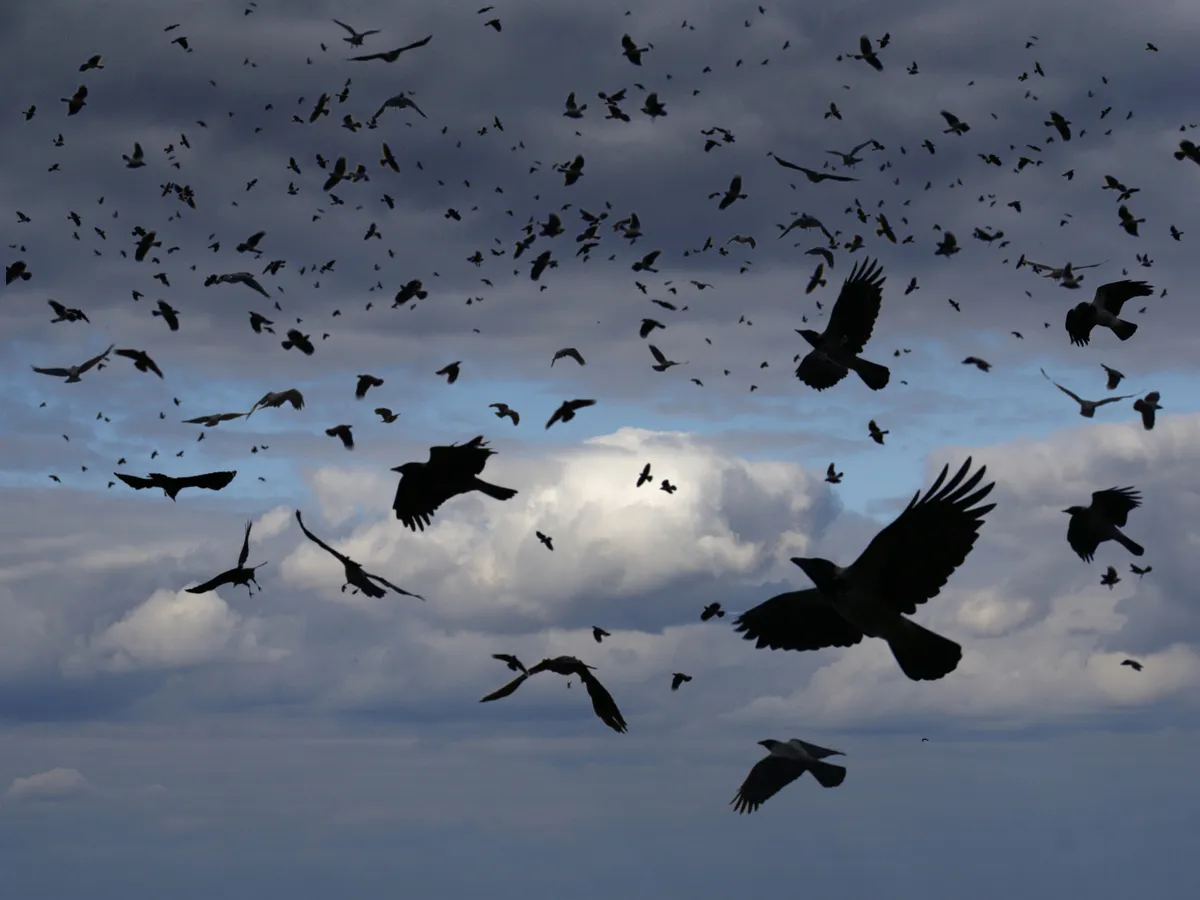
In fact some of this mythology was originally associated with ravens but, given the considerable difficulties that many people have in identifying black corvids, it is understandable that traditions were transferred between the species.
Much of the folklore is rather macabre. There is, for example, the belief that crows peck out the eyes of their ‘victims’ to attain their excellent vision. It is a small step to see a group of crows, attracted to a corpse, not as scavengers but as agents of death with murderous intentions.
This Q&A originally appeared in BBC Wildlife, and was answered by Stuart Blackman.
What keeps carrion and hooded crows apart?
Carrion and hooded crows may look very different, but they are almost indistinguishable genetically and behaviourally, and are quite capable of interbreeding and producing fertile offspring. For the most part, though, they don’t mix.
It seems that what keeps them apart is their sexual preferences. Each tends to mate with its own
kind. Hybrids, when they do occur, have plumage that is intermediate between their two parents, which makes them unattractive to birds of either population.
This serves to keep the populations distinct – a process that is expected to eventually lead to their becoming full, reproductively incompatible species.
This Q&A originally appeared in BBC Wildlife, and was answered by Stuart Blackman.
Corvids of the UK:
Carrion crow (Corvus corone)
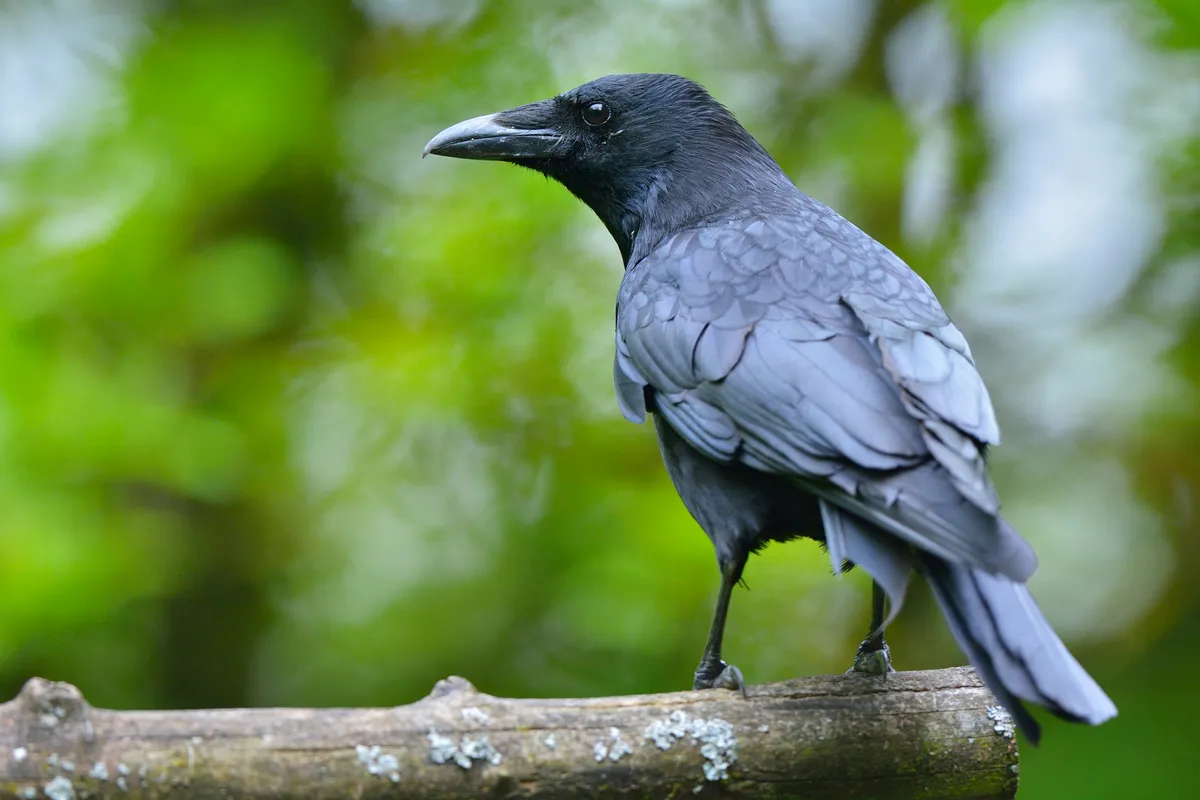
One of our most familiar corvids, the carrion crow (often just referred to as ‘crow’) can be found across the majority of the British Isles, but not much across Ireland, and in a wide variety of habitats, including gardens. They eat a range of foods including carrion, invertebrates, eggs, and fruit.
They are usually seen alone or in pairs, but can form flocks and may sometimes be found with other corvid flocks. They are all black, and can be confused with other corvid species, particularly juvenile rooks and ravens.
The closely related hooded crow was thought to be a subspecies of the carrion crow, but has now been split as a separate species.
Hooded crow (Corvus cornix)
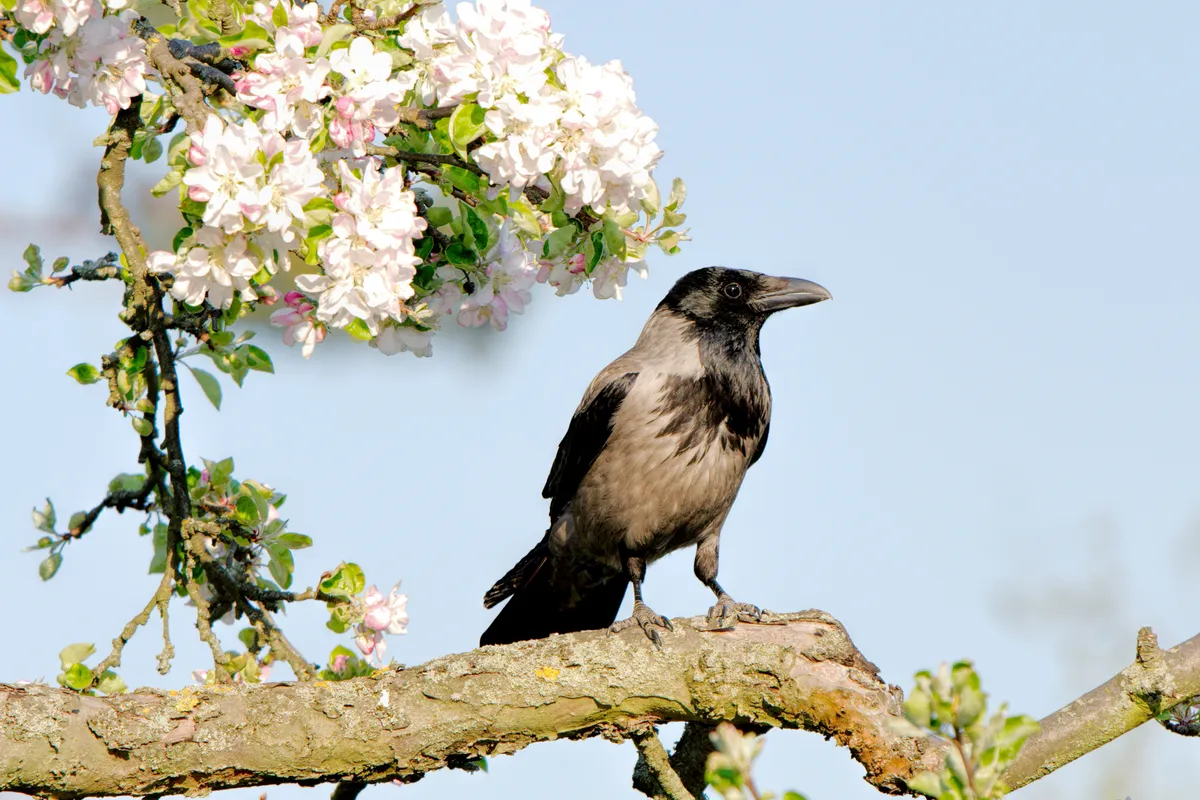
Until recently, the hooded crow was believed to be the same species as the carrion crow, but has now been described as distinct species. Where the two species overlap, there may be some interbreeding.
The same size as a carrion crow, the hooded crow has a grey body, with a black head, chest, wings and tail.
In the British Isles, hooded crows are found northern and western Scotland, Ireland and the Isle of Man. Where it is found, it replaces the carrion crow. There is a narrow band of overlap between the two species.
Jackdaw (Corvus monedula)
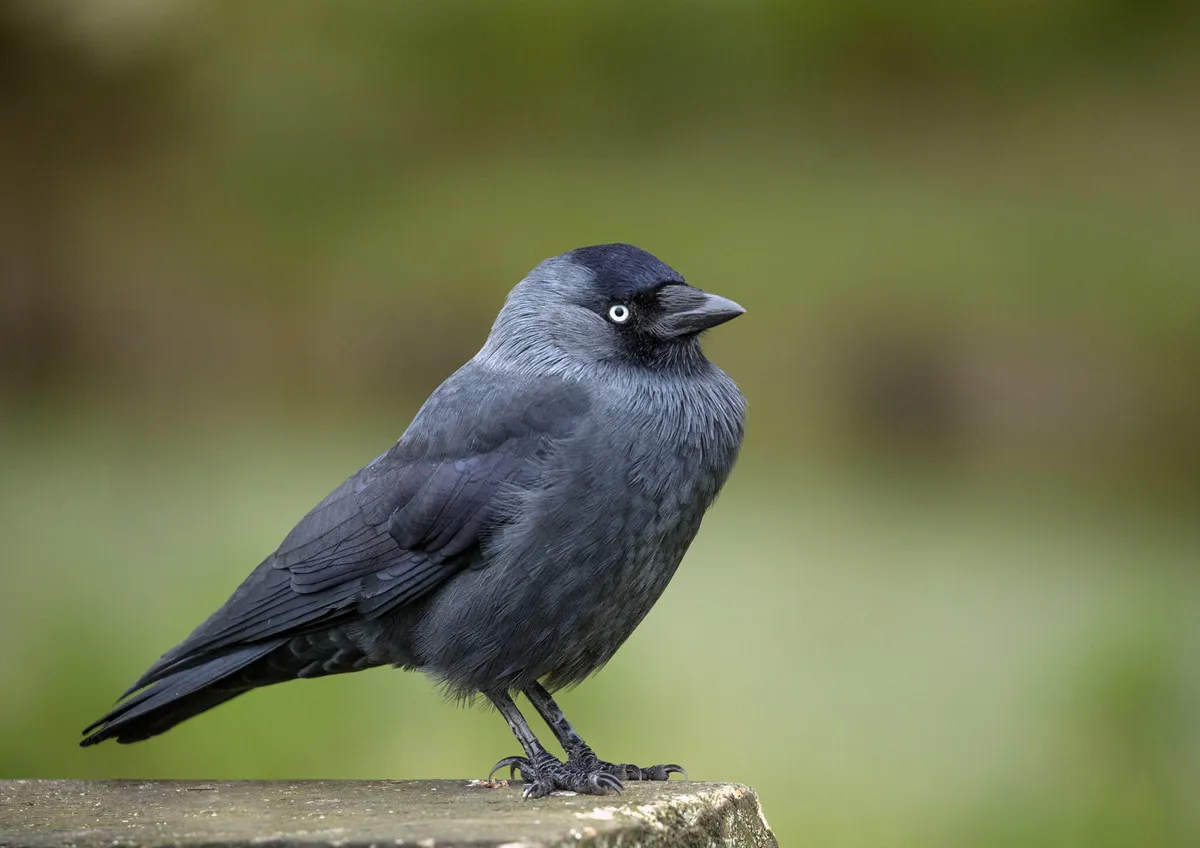
The jackdaw is one of the smaller corvids, and is a grey-black colour with a black face and cap. It has a bright white eye.
Jackdaws are found across much of the British Isles, in a variety of habitats. They roost together in woodlands, and will join with flocks of rooks.
Rook (Corvus frugilegus)
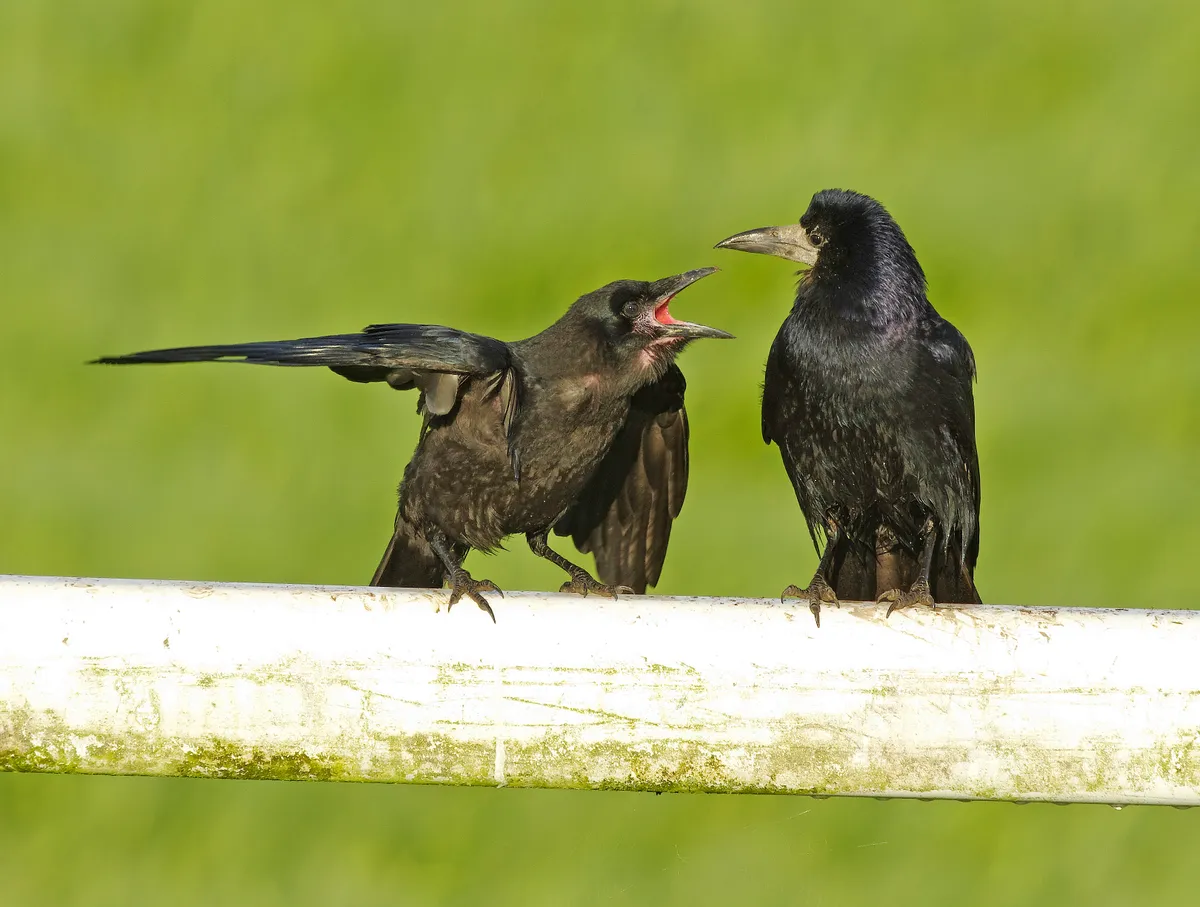
Similar in size the carrion crow, the rook is a large black. One of the key identifying features is the bare grey face and grey bill, although these are not present in juvenile rooks.
They are sociable birds and often seen in flocks, which may sometimes contain other corvids including jackdaws and carrion crows.
Rooks are found across most of the British Isles and in a variety of habitats.
Raven (Corvus corax)
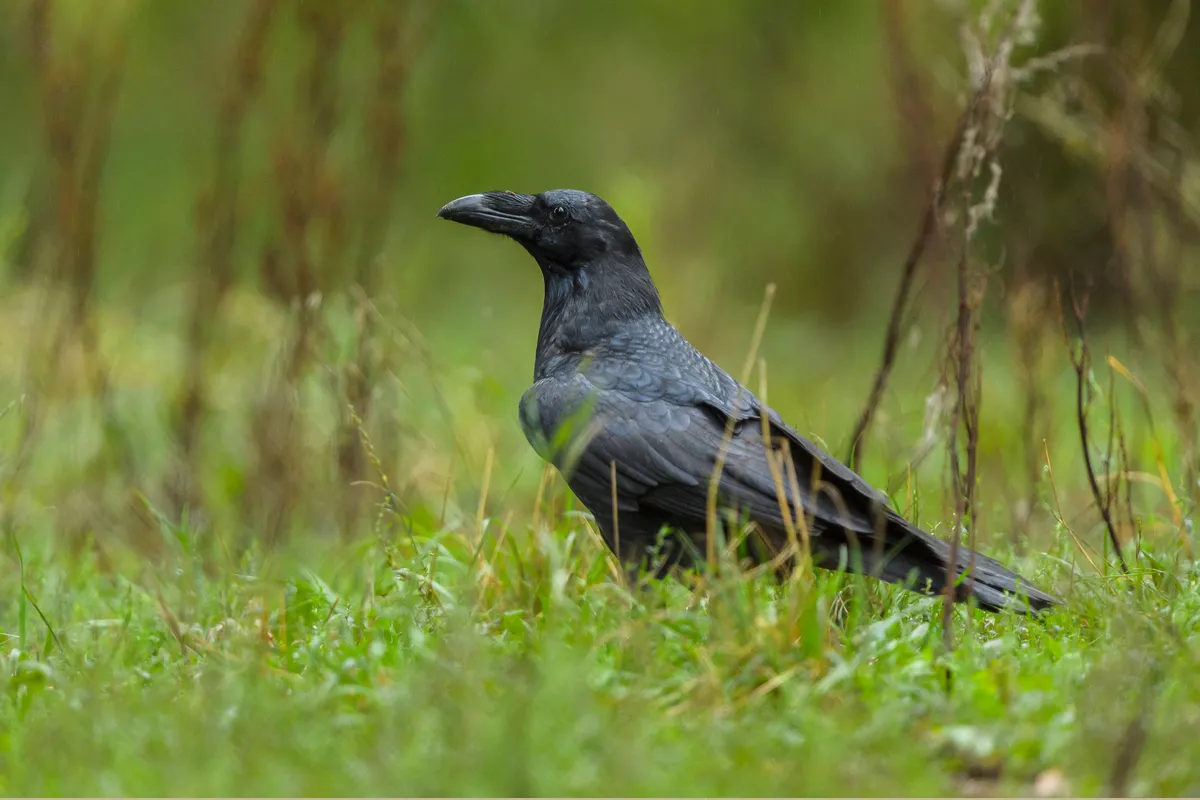
The raven is the largest corvid in the British Isles, with a wingspan of 125-135cm, similar in size to a buzzard. Like the carrion crow, it is all black, but the raven is bigger with a thicker neck and bill. In flight, the crow's tail is rounded in shape, whereas the raven's tail is diamond in shape.
Ravens are usually found alone or in pairs, and typically in upland areas. They aren't often found in urban areas (except for at the Tower of London). They have a very distinctive “cronking” call.
Eurasian magpie (Pica pica)
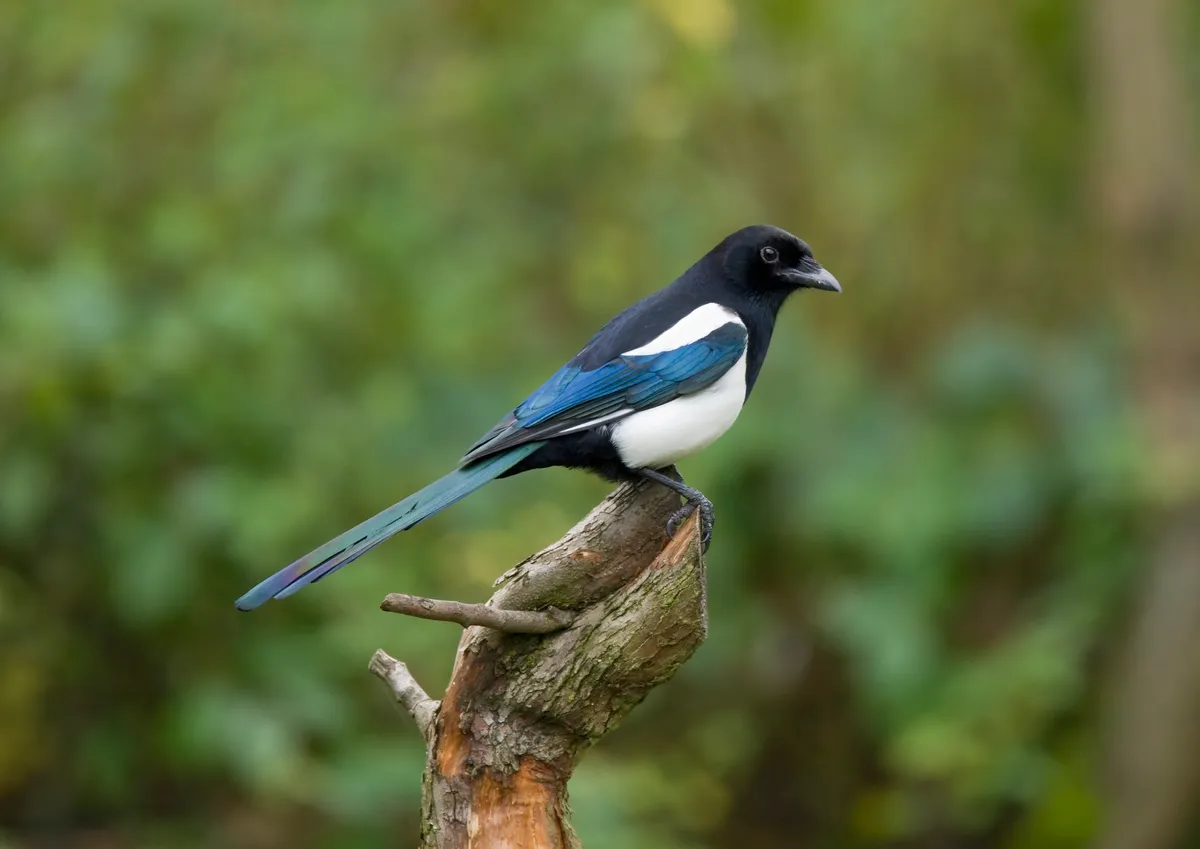
Also known as the common magpie, this species is usually just referred to as ‘magpie’ in the British Isles as it is only the only magpie species resident here. The only other European magpie species is the Iberian magpie, which is found in the Iberian peninsula.
With its pied (black and white) body, blue wings and long tail, the magpie is a very distinctive bird and one of the easiest corvid species to identify.
The magpie's scientific name, Pica pica, is an example of a tautonym, where the genus and specific name are the same.
Eurasian jay (Garrulus glandarius)
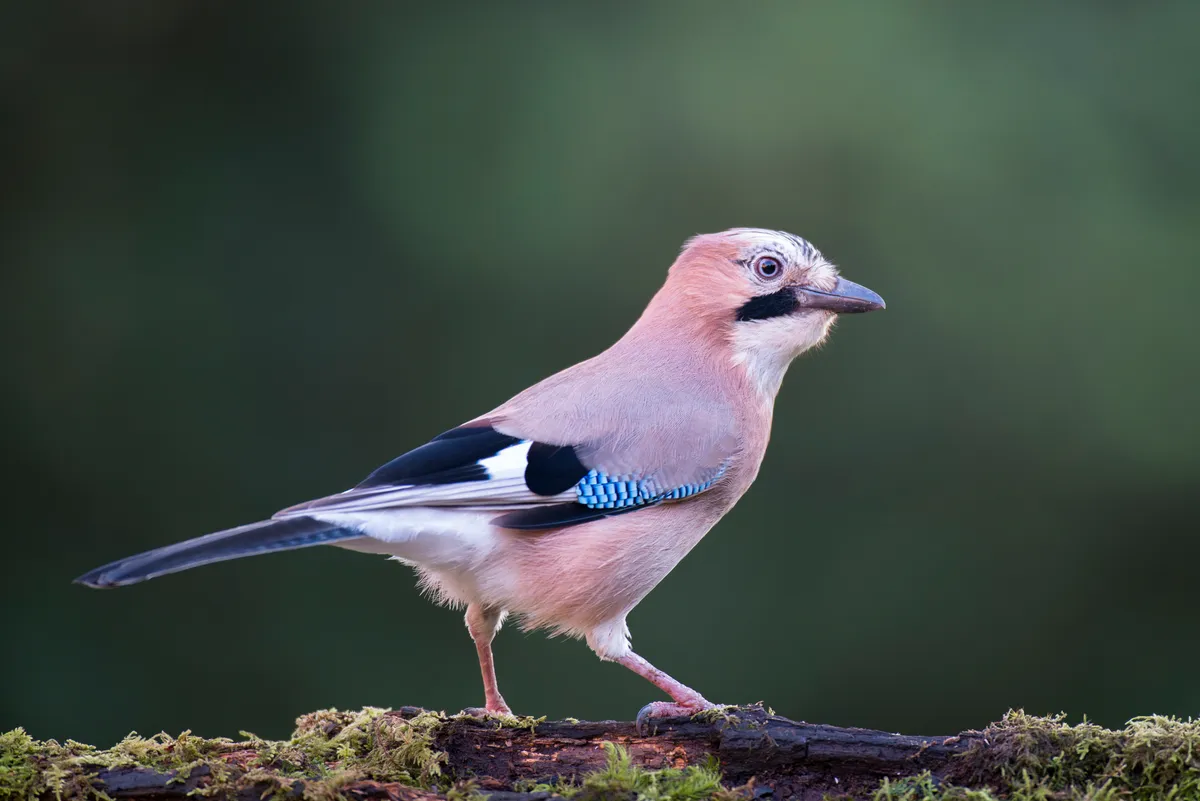
Usually just referred to as the ‘jay’, this corvid species differs from the other corvids as it has far less black colouration. In comparison, it is a very colourful bird with a pinkish body, black and white wings with a patch of bright blue, a white rump, black tail, a pale streaked crown, black ‘moustache’ and pale chin.
Despite this mix of colours, jays can be hard to spot as they are typically found in woodlands, and are relatively shy birds.
Jays are well-known for caching food, particularly acorns, to eat at a later date – usually burying them in autumn, and retrieving them in winter.
Chough (Pyrrhocorax pyrrhocorax)
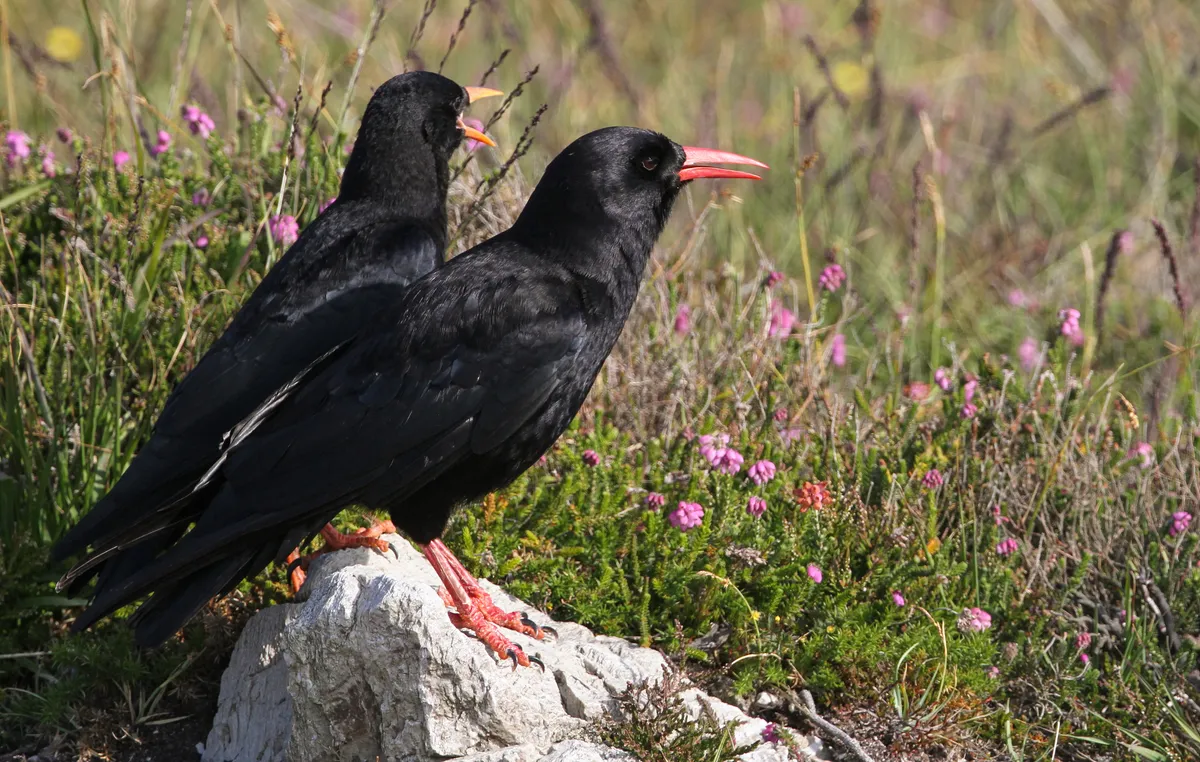
Also known as ‘red-billed chough’, the chough (pronounced ‘chuff’) is one of two species in the Pyrrhocorax genus, the other being the Alpine (or ‘yellow-billed’) chough. In the British Isles, it is restricted to the west and is found in Wales, Cornwall, the Isle of Man, parts of western Scotland, and Ireland.
Changes in livestock management, as well as persecution, resulted in a decline in their populations and it became extinct in much England.
As well as their distinctive red bills and legs, they are known for their impressive acrobatic flights around seaside cliffs, often in flocks.
The chough's scientific name, Pyrrhocorax pyrrhocorax, is an example of a tautonym, where the genus and specific name are the same.

